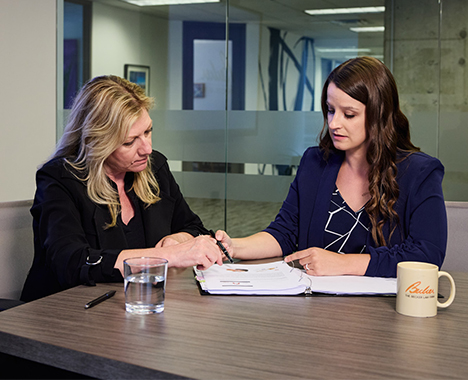Schedule a Consultation
216-621-3000Schedule a Consultation
216-621-3000Every clinician is required to follow a medical standard of care, or, a diagnostic and treatment process depending on the patient, illness or clinical circumstance. This standard of care is a benchmark used to guide and evaluate the practice of medicine, and can evolve over time. The standard of caring for premature or at-risk babies, in particular, involves highly skilled training and use of sophisticated technology and equipment.
Terrie E. Inder, MD, PhD, professor of pediatrics, of radiology and of neurology at Washington University School of Medicine in St. Louis, Missouri, is a medical practitioner advancing the standard of care in the field of neonatal intensive care.
Dr. Inder uses magnetic resonance imaging (MRI) scans of premature, at-risk infants’ brains to assist in predicting developmental outcomes. Using the scans, Dr. Inder and her team can define any abnormalities in the brains of pre-term infants and help inform families about their babies’ risks for future disabilities. This, in turn, helps guide the treatment of premature babies with the best possible development outcomes.
Dr. Inder’s team is also working to improve the health of full-term infants. They are studying therapeutic cooling by reducing a baby’s body temperature for three days. The technique has resulted in a 25 percent or more reduction in the risk of death or disability for infants who may have received an insufficient oxygen supply during birth. Therapeutic cooling may eventually become part of the standard of care for neonatal intensive care.
Premature babies face unique health challenges. However, technological and medical advancements make it possible for them to survive. Premature and at-risk infants are often treated in the neonatal intensive care unit (NICU), where specialized medical providers and equipment provide babies superior medical care.
Infants born prematurely need special treatment and time to develop. Areas of premature babies’ bodies that may be under-developed and need particular attention are the:
Many types of equipment are used in the NICU as part of the standard of care. The equipment can be overwhelming and intimidating; however, knowing the purpose of the machines-particularly parents-can help allay fears.
While in the NICU, babies’ vital signs are constantly monitored. Special machinery checks and records infants’:
These measurements are taken through wires or tubes and attached to adhesive pads or cuffs on the babies’ chests, legs or arms. It may look scary, but they are not harmful to the infant.
In addition, infants in the NICU might require respiratory assistance. Depending on the baby’s needs, several methods are available to help the infant maintain a sufficient oxygen level:
Other common NICU equipment includes:
Specialized staff in the NICU works hard to improve the health of infants in their care. Common NICU medical providers and staff include:
Each of these providers should be trained in and provide the accepted medical standard of care for neonatal intensive care and premature babies. If your infant suffered harm during delivery or from the poor treatment of a medical provider, contact a lawyer experienced in handling birth injury cases. If the treatment you or your baby received did not meet the appropriate standard of care, you may have a legal claim for compensation.

